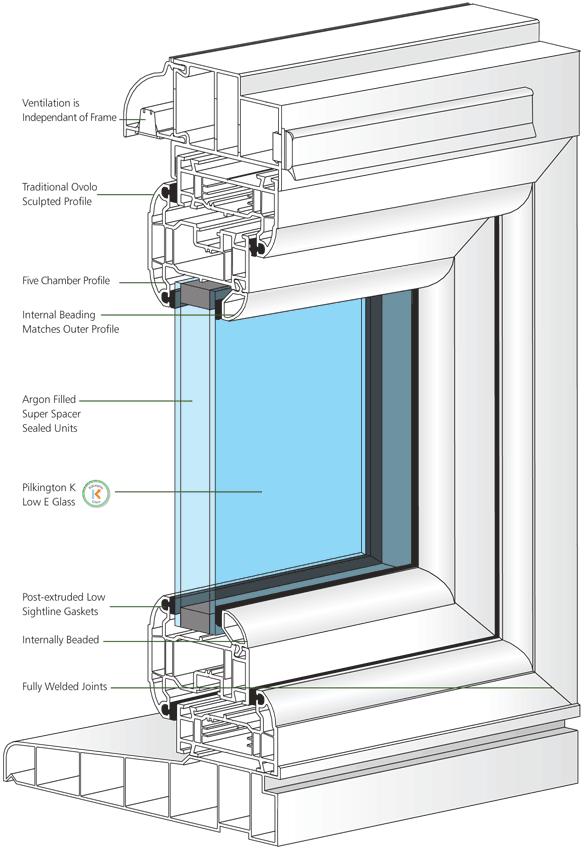A-Rated Windows, Who Do They Really Benefit?
I don’t know about you, but when someone tells me they know what’s best for me, I instinctively reach down and check that my wallet is still in my pocket. When it’s a double glazing salesman, I check that I still have a pocket.
I was reading a post by The Double Glazing Blogger about the effect that the introduction of BFRC A-Rated Windows has had on the window industry.
He argues that prior to the introduction of the BFRC Windows Energy Rating scheme (WERs), fabricators and installers were forced to differentiate themselves and their products by such mundane things as quality, aesthetics, security, customer service and, of course, price.
He welcomes the introduction of WERs because it has allowed a “stagnant” industry to increase profit margins.
There is a good deal of confusion within the industry surrounding the scheme. It is not an absolute measure of performance, but a relative comparison. It is proposed to be the only measure which will be used in the revised Part L Building Regulations due to come into force in October 2010.
For a light-hearted take on WERs there is a quiz on Renegade Conservatory Guy’s Blog. Another guest post by Kevin Ahern shows the lengths he has gone to to try and understand the rating scheme. He concludes with this statement:
“Ask yourself a question. Low iron glass, why ? Is this marvelous UV transparent product such a benefit to our society that we have long neglected it at our cost? Or is it just another gimmick to scrape a few more theoretical numbers on to our colourful pieces of paper?
Are we as an industry doing our bit to help James Strawbridge save the planet? Are we as an industry helping the government with the building regs 2010 Part L implementation?
Or, as some may argue, is the window industry taking the Mick out of Mr Strawbridge, the building regs, you and me, and worst of all, the consumer?”
Is there really a payback for the homeowner from improving the thermal performance of their home? Studies carried out in New Zealand suggest that there isn’t. Energy use in previously cold homes which had been retro-fitted with insulation was shown to be higher than in a group of uninsulated homes. Apparently, the homeowners enjoyed having a warmer home, and wanted to keep it that way.
So, with the double glazing industry selling A-Rated windows at a higher margin, the claimed payback from energy savings, and reduced carbon emmissions not likely to be realised, the question remains. Who do they really benefit?


I never said they were mundane!
And I never mentioned customer service either! You sure you’ve been reading my post lol.
DGB
I was paraphrasing…
Don’t you agree though that WER’s present the best selling point the industry has had for years? Especially now with such a focus on the environment.
Any development which offers a real benefit to the customer is a great selling point.
The point of my post is that although A-Rated windows do offer potential benefits, research shows that they may not be realised. So, paying extra for A-Rated windows only benefits one group – the fabricator and installer.
It’s up to the installer then to get the point across as best they can. We do A rated windows as standard though, so we get round that problem.
Pingback: Tweets that mention A-Rated Windows, Who Do They Really Benefit? « The Window Maker -- Topsy.com
Pingback: uberVU - social comments
When everyone has an ‘A’ rating, and as a consequence is paying the GGF for the privilege. What is the marketing advantage?
Which causes the statement to return to – “fabricators and installers were(are) forced to differentiate themselves and their products by such mundane things as quality, aesthetics, security, customer service and, of course, price†– although this time they will be paying an addition tax to the GGF to be permitted to trade.
Thanks for your comment Ian. I agree with you. It’s standard product life-cycle theory. Early adopters have always paid through the nose.
As you say, when everyone is selling A-Rated windows, then decisions will be made on quality, price and delivery.
Hello there, great posting. I have been reading through your blog for a few weeks and simply wanted to drop you a line to say what a wonderful resource I think you are piecing together here. All the best. John also known as (Double Glazing Dude)
Thanks John, much appreciated
Your post was awesome! I hope you continue posting great articles like this. You actually piece together factual information and it helps us understand the topic better.
Pingback: A-Rated Windows – The Emperor’s New Clothes? « The Window Maker